The modern Porsche 911 isn’t just an extraordinary car, singular, but an extraordinary range of cars.
You can have a regular rear-drive, road-focused 911 with a roof, or a four-wheel-drive alternative, or one without a roof, or one with half a roof, plus versions that are track-focused, or dominated by straight-line acceleration, rough-road ready… In all, there are 26 different 911s on sale today.
Things were rather different when Porsche first set out to put the family name on a sports car, in 1948, when the son of Porsche founder Ferdinand, also called Ferdinand but known as Ferry, designed a two-seat mid-engined roadster at a sawmill in Gmünd, Austria.
The mid-engined 356 prototype had a complex spaceframe chassis. Porsche still owns it. But when it came to turning that into a production vehicle, the 356/2, Ferry adopted a layout more familiar to Porsche, because his old man had designed the Volkswagen Type 1, or Beetle: the production 356 had a Volkswagen 1100cc engine, gearbox and suspension, all in their original locations, with a monocoque chassis.
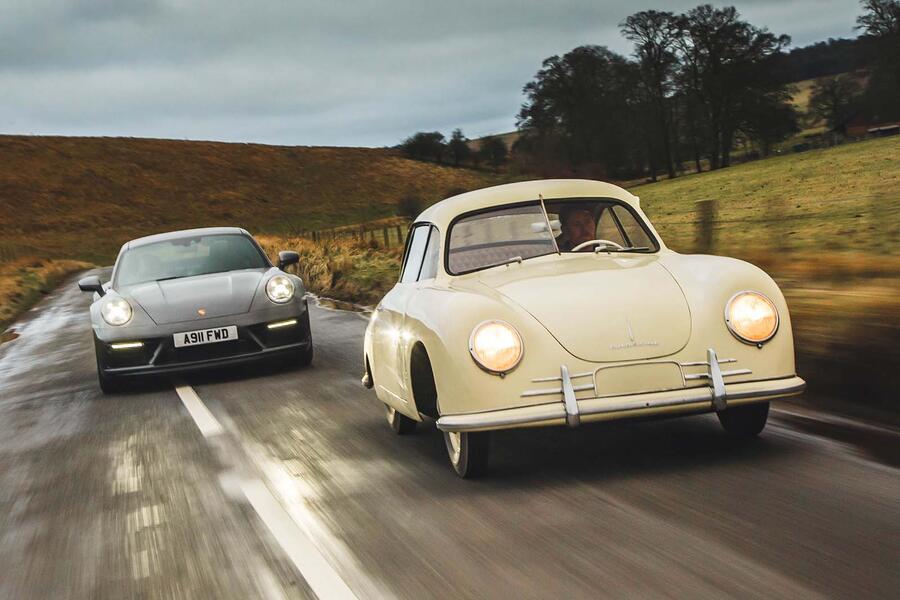
This was simpler and cheaper to make but also meant it was more practical, with notable space behind the front bench seat. In a country strapped for money and resources, the Austrian government agreed Porsche could make some 356s so long as it exported them.
Between 1948 and 1951, then, Porsche, with the assistance of some suppliers because the factory was so small, went on to make 52 examples of the 356/2 – 44 coupés and eight roadsters – before the company returned to Stuttgart. In doing so, the template and lineage for the greatest sports car of all was born.
Quick links: Introducing the Porsche 911 GTS - Introducing the Porsche 356/2 - Interior - Driving dynamics - Verdict - Specifications
Introducing the Porsche 911 GTS
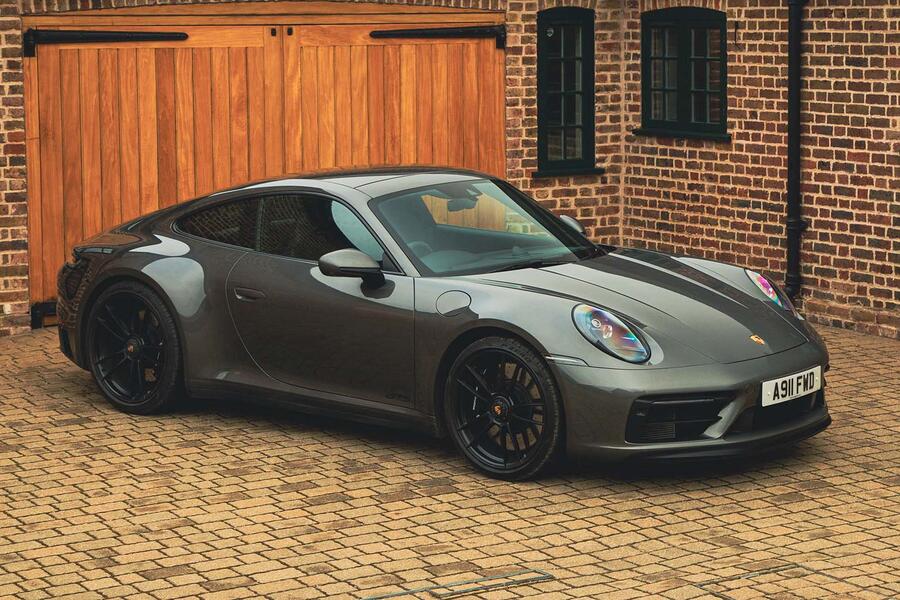
Today, we have represented the template with a Carrera 4 GTS, an upper-middling 911 with a 3.0-litre turbocharged flat-six engine making 474bhp. It will go from rest to 62mph in 3.3sec and do 192mph flat out, but ultimately it’s still considered a road-focused 911.


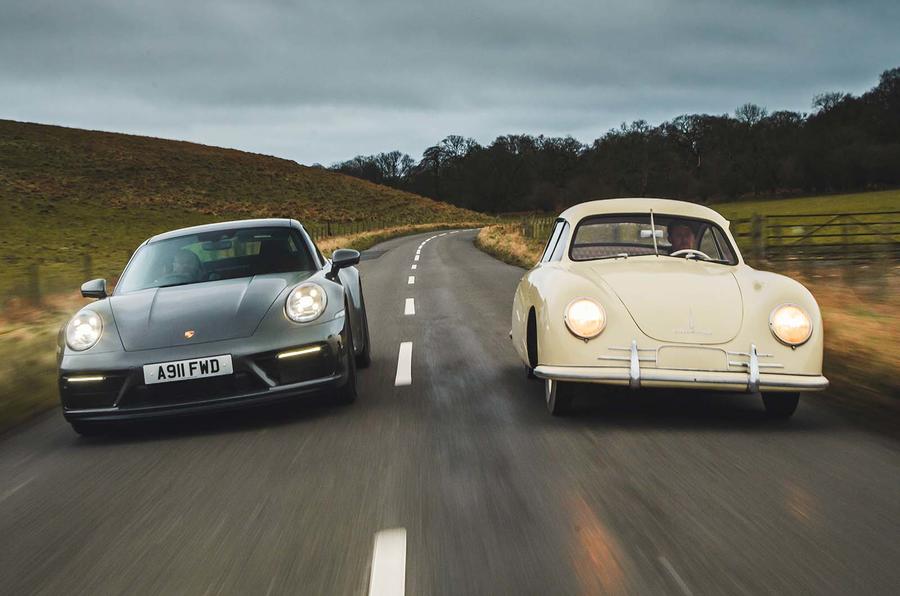

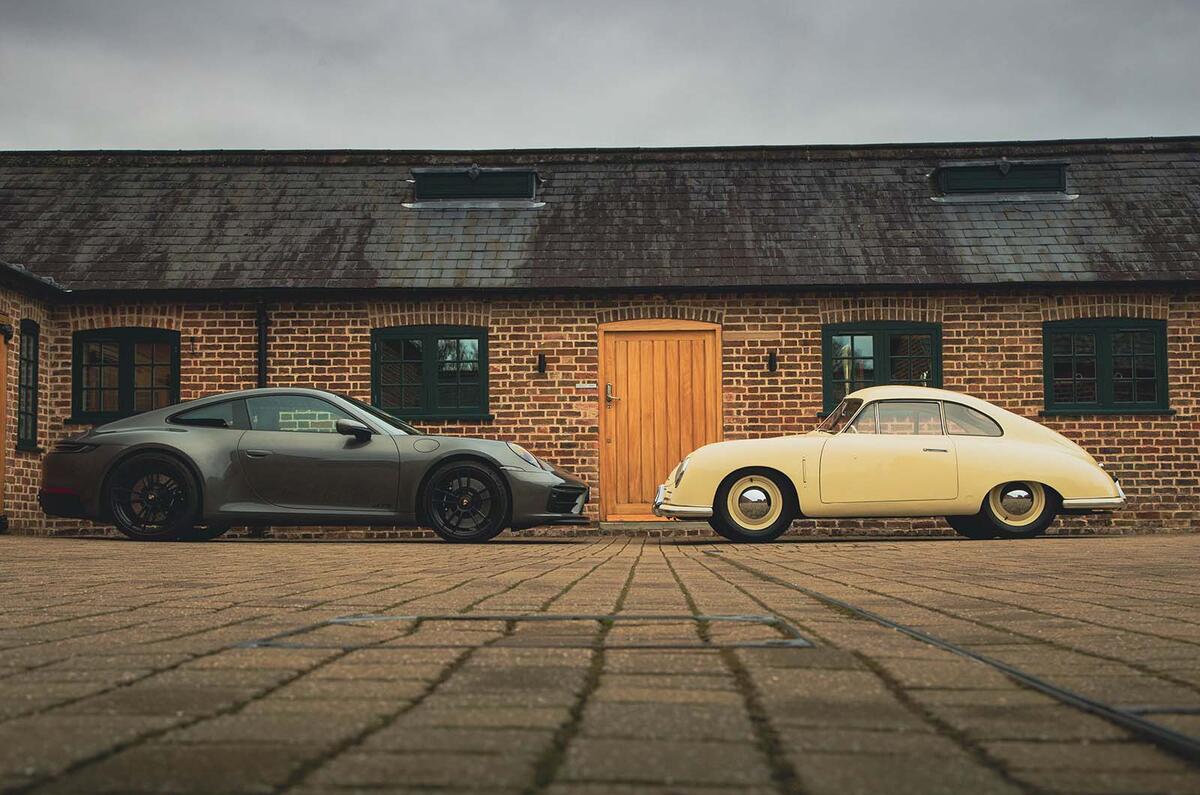








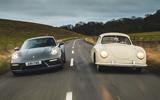














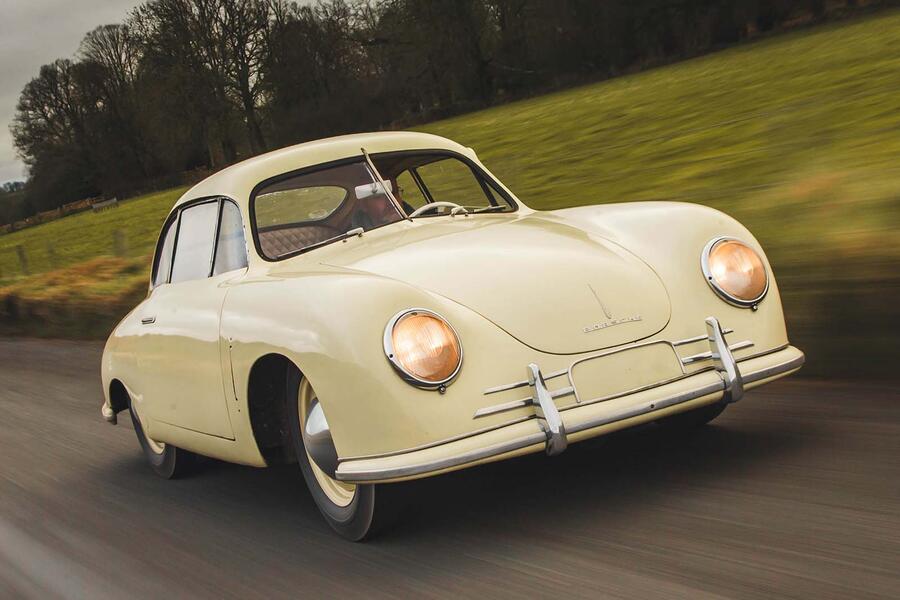
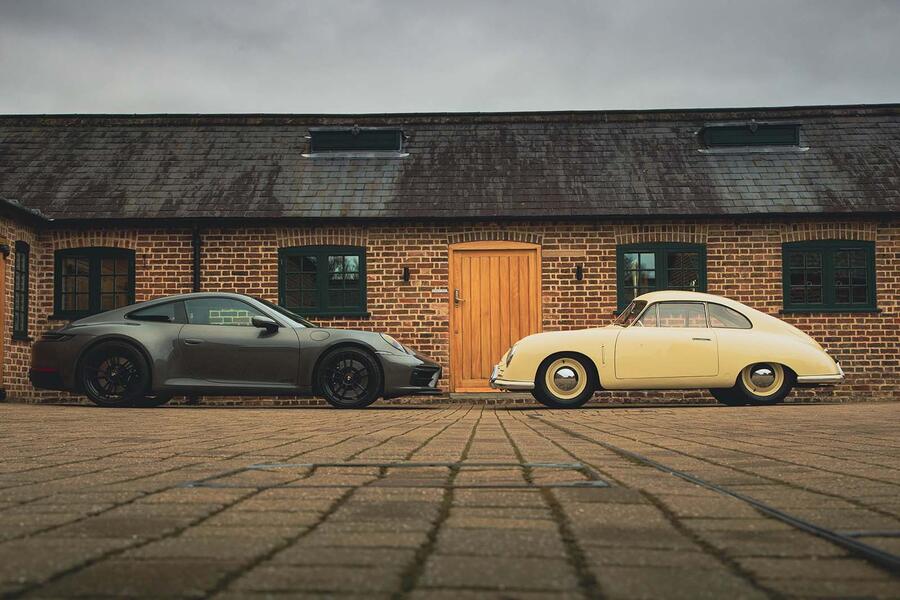
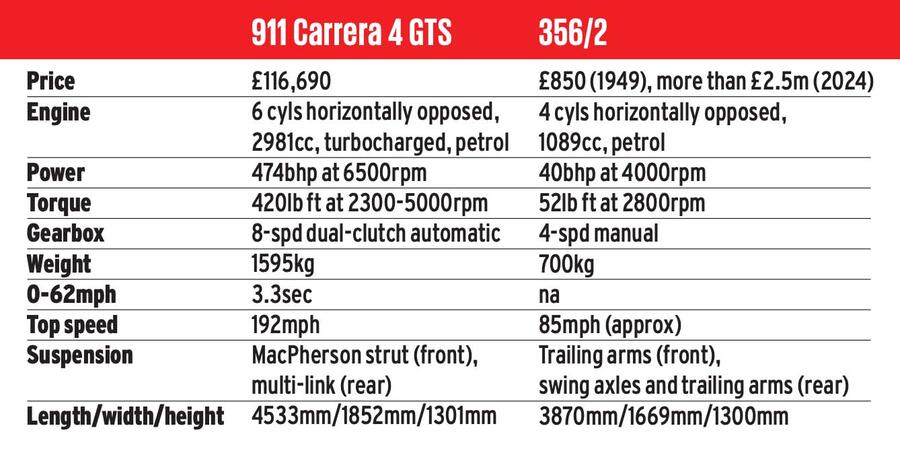





Join the debate
Add your comment
I wonder why the 356 has such narrow front and rear tracks.
Is this a legacy of its Beetle origins, or was there some aerodynamic benefit?
Either way, it just looks so wrong and must hinder the car's ride and handling.
I feel the current 911 is just too big in size. I had a 993 which was perfect, easy to park , easy to place on the road. Decent front boot space as well. Maybe we need to go back to the future.
I wish that we could buy something as simple, light, efficient and practical today - but I notice that a Dacia Spring also has 45 horsepower and a kerb weight less that one tonne!
We really have lost our way with the current breed of oversize, overweight and overcomplicated (not to mention overpriced) cars...
Completely agree, the best cars are the small light ones in my opinion, obviously added mandatory safety gear costs weight, but city and superminis are the best of the lot as far as I'm concerned, shame they're getting phased out for x-over/SUV's.
As far as sports cars are concerned, the Alpine A110 and MX5 are probably the smallest and lightest, Porsche's are now pretty much huge heavyweights by comparison.
I get what Matt says about not looking exotic, but to me, the 356 does just that, I love them, it looks every bit of the exotic classic sports car that it is, to me anyway.